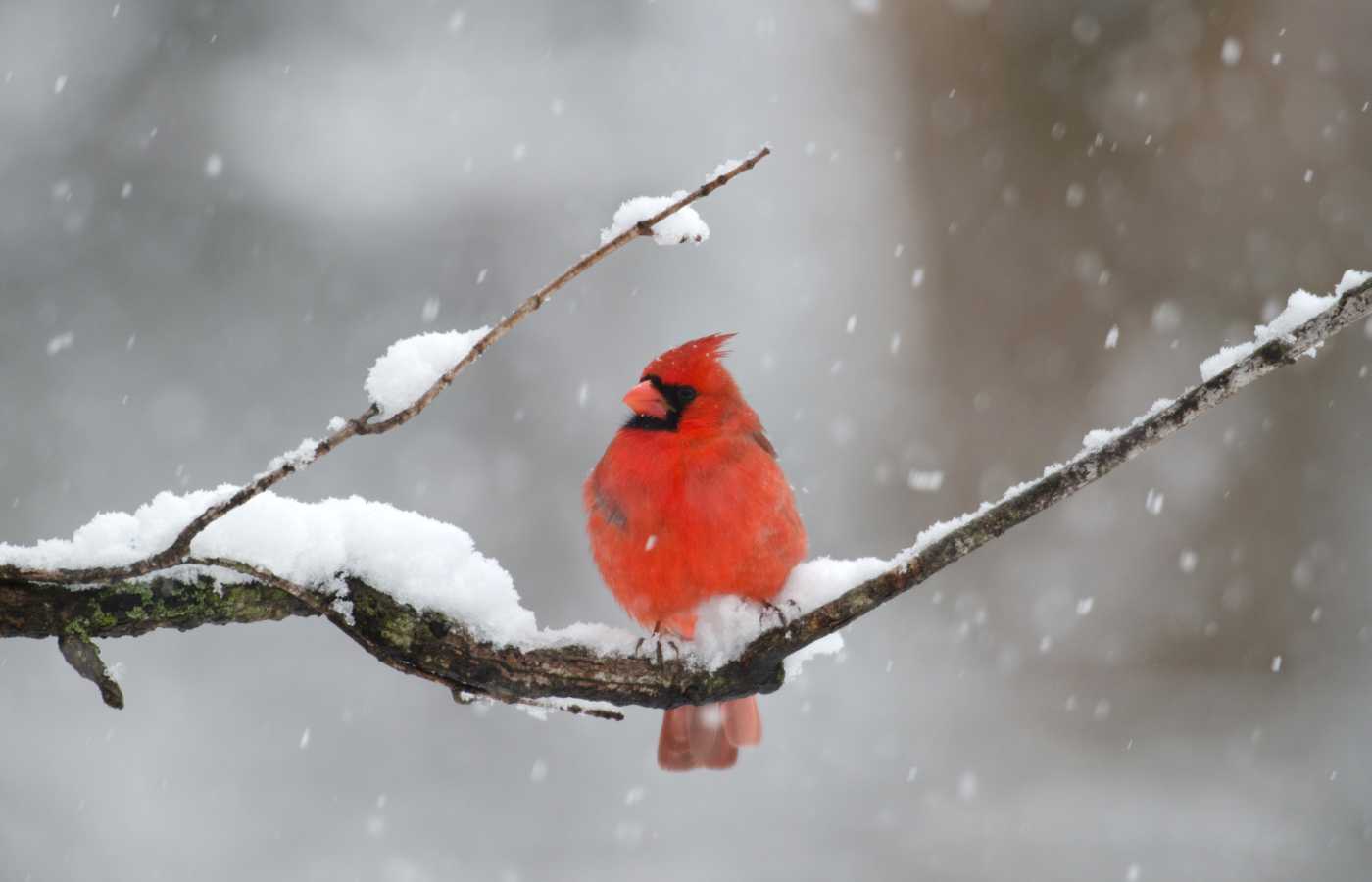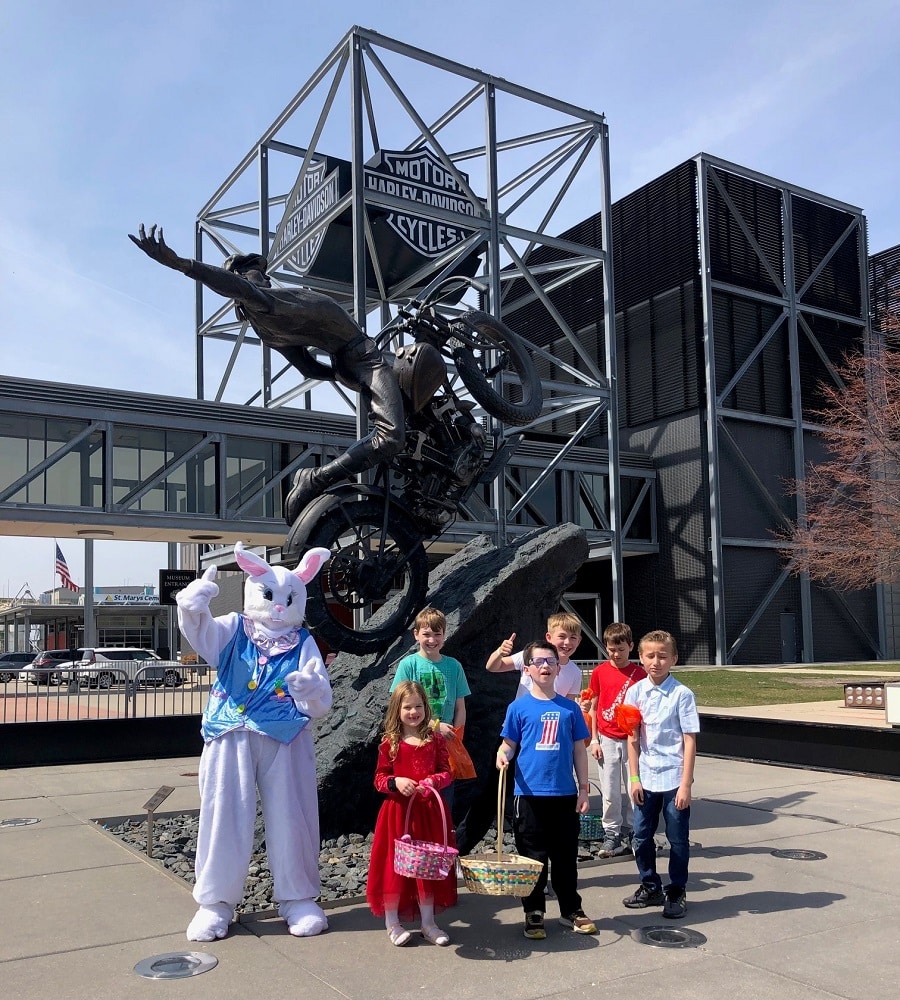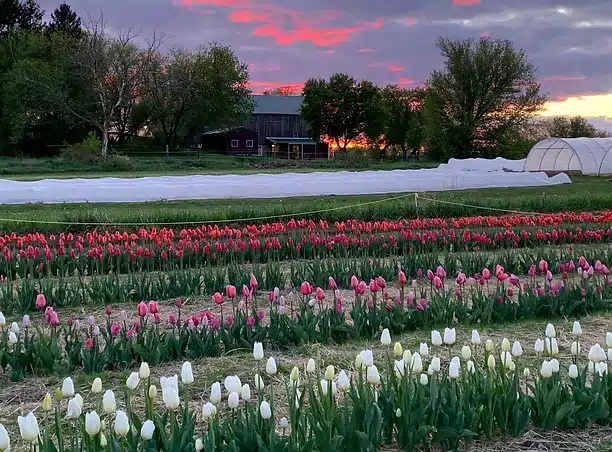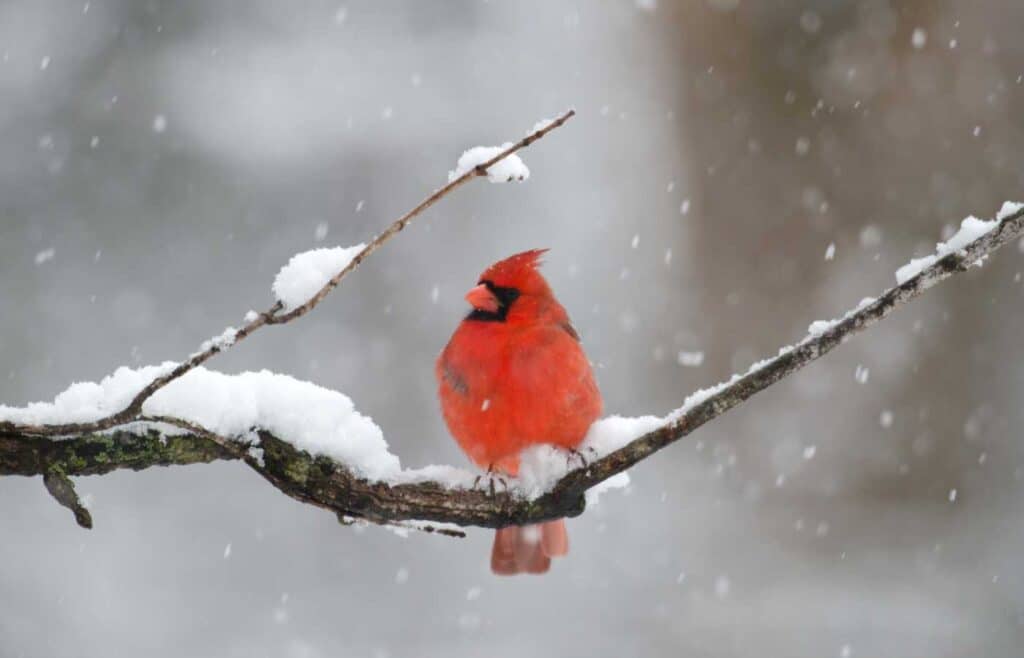
In Wisconsin, the colder months are not just about snowmen and sledding; they also bring a special opportunity for families to connect with nature—and each other—through birdwatching.
Whether you’re bundling up for a backyard adventure or cozying up by the window with a cup of hot cocoa, birdwatching can be a fun and engaging activity to enjoy with your kids. This guide is your treasure map to discovering the colorful and fascinating birds of Wisconsin that visit in the winter.
From the bright red flash of a Northern Cardinal to the majestic flight of a Snowy Owl, we’ll show you where to find these feathered friends and share fun tips on how to welcome them into your yard.
So, grab your binoculars and let’s embark on a winter birdwatching journey together, creating lasting memories with every bird you spot!
1. Dark-eyed Junco

Who’s That Bird?
The dark-eyed junco, a small and sprightly bird with its sleek gray coat, crisp white belly, and signature dark eyes, is the epitome of winter charm. These little guys are like the snowbirds of the bird world, arriving when the cold hits and making Wisconsin their winter retreat.
Where & When to Spot Them
You’ll find these common yet captivating birds flitting around Wisconsin all winter long. They love hanging out in flocks, often playing it cool on the ground under feeders or cozying up under bushes. It’s like they’re hosting their own little winter gatherings!
How to Attract:
Want to roll out the welcome mat for them? Scatter some mixed seeds on the ground or fill up low feeders to get in on their good side. Dark-eyed juncos aren’t picky; they love a good seed mix, making them the perfect guests for your winter birdwatching party.
2. Blue Jay
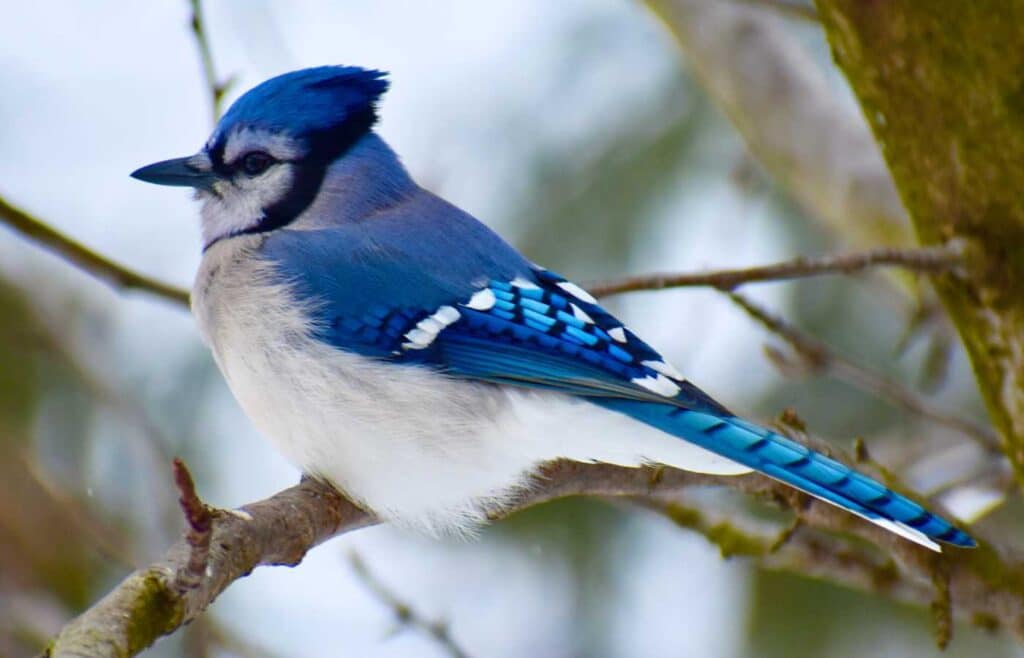
Who’s That Bird?
The blue jay, with its dazzling blue, white, and black plumage, is like a piece of the summer sky that decided to stay for the winter. Known for their unmistakable loud “jay-jay” call, these birds add a dash of vibrancy and a touch of drama to the quieter winter landscape.
Where & When to Spot Them
While blue jays grace us with their presence all year, their bright colors stand out more starkly against the winter’s snowy backdrop, making them a more noticeable—and delightful—sight during the colder months. Some Blue Jays may migrate south during winter, though many do remain in Wisconsin.
How to Attract:
Want to befriend these colorful creatures? Their diet makes it easy. Offering peanuts, sunflower seeds, and suet in feeders will not only attract blue jays but will also turn your yard into a bustling bird bistro. Watching a blue jay skillfully crack open a peanut is a winter joy not to be missed.
3. The Black-capped Chickadee

Who’s That Bird?
The black-capped chickadee, with its distinctive black cap and bib, white cheeks, and lively chirps, brings a spark of joy to the chilly Wisconsin winter landscape. This tiny bird, known for its curious and friendly nature, is a favorite among birdwatchers for its ability to brighten even the coldest of days.
Where & When to Spot Them
You’ll spot these adorable creatures flitting about all over Wisconsin, from the dense woods of the North Woods to the cozy backyard feeders in Southern Wisconsin. During the winter months, their presence is a common sight, offering a delightful bit of birdwatching right from your window.
How to Attract:
Want to invite these cheerful birds into your yard? It’s simple: black-capped chickadees have a particular fondness for sunflower seeds and suet. By stocking tube feeders with these treats or hanging suet cakes nearby, you’ll quickly become a favored stop on their winter foraging route.
4. Pine Siskin

Who’s That Bird?
The pine siskin may easily blend with the more familiar faces of the finch family, thanks to its small, brown, streaky appearance complemented by distinctive yellow wing bars. However, these birds carry their own unique charm and mystery, especially given their unpredictable visits.
Where & When to Spot Them
Pine siskins are known for their irregular winter appearances, sometimes arriving in large, impressive flocks. These irruptions are largely dependent on food availability in their native ranges, making their presence a special treat for birdwatchers.
How to Attract:
Attracting these nomadic visitors can be a delightful challenge. Thistle (nyjer) seeds and small sunflower seeds are their favorites, and providing these in finch feeders is the best way to invite them to your yard. Watching a flock of pine siskins descend on your feeders can be a mesmerizing winter spectacle.
5. The Northern Cardinal

Who’s That Bird?
The northern cardinal, with its striking red plumage in males and the more subdued but equally beautiful pale brown in females, both adorned with distinctive crests and masks, is a year-round spectacle in Wisconsin. These birds don’t just add a splash of color to the landscape; they bring vitality to the stark winter backdrop, making them a beloved sight in backyards and thickets across the state.
Where & When to Spot Them
Unlike many bird species that migrate with the changing seasons, northern cardinals are steadfast residents throughout the year. Their resilience and adaptability make them a common bird, but their presence is always a welcome sight against the winter snow or the summer greenery, providing a continuous thread of natural beauty regardless of the time of year.
How to Attract:
Attracting cardinals to your backyard is simple, and the reward is a vibrant spectacle right outside your window. These birds have a particular fondness for sunflower seeds, safflower seeds, and cracked corn. Using platform feeders or simply scattering seeds on the ground are effective ways to invite them closer. The sight of a cardinal against the snow, picking seeds from the ground, is one of the simple joys of winter birdwatching.
6. Snowy Owl
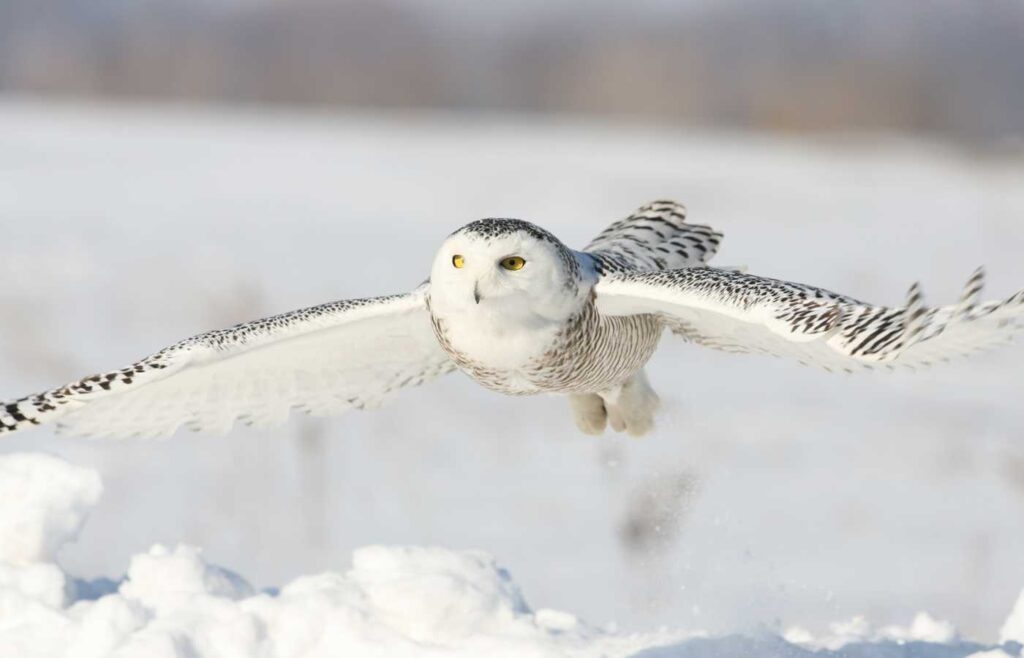
Who’s That Bird?
The snowy owl, a large, white owl adorned with black or brown spotting, offers a rare and enchanting sight during the Wisconsin winter. These magnificent birds are typically found in open fields and along shorelines, where their presence varies from year to year, making each sighting a special event.
Where & When to Spot Them
As elusive winter visitors, snowy owls migrate from the Arctic tundra to grace the northern half of the United States, including parts of Wisconsin. Their arrival adds a thrilling element to the winter season, drawing birdwatchers and nature enthusiasts to the best places for a glimpse of these majestic birds in their natural habitat. Their winter presence in Wisconsin varies annually, depending on factors like prey availability in their Arctic breeding grounds. Some years see higher numbers due to irruptions, while others have fewer sightings.
Observation with Respect
Observing snowy owls requires patience and respect for their wild nature and sensitivity to human disturbance. The best way to enjoy these magnificent birds is from a distance, using binoculars or a camera with a long lens. This approach ensures the owls can continue their usual activities without stress or interruption, allowing us to witness their beauty without impacting their well-being.
7. Downy Woodpecker

Who’s That Bird?
The Downy Woodpecker, with its distinctive black and white plumage and the male’s striking red patch on the back of the head, is a familiar sight across Wisconsin. As the smallest woodpecker in North America, its presence is a common but always delightful part of the local birdwatching scene, easily spotted in both wooded areas and suburban backyards throughout the year.
Where & When to Spot Them
Unlike many birds that migrate with the seasons, Downy Woodpeckers are year-round residents in Wisconsin, bringing life to the landscape even in the coldest months. Their adaptability to different habitats, including deciduous and coniferous forests as well as urban and suburban settings, makes them one of the most accessible bird species for enthusiasts and casual observers alike.
Welcoming the Downy Woodpecker
Attracting Downy Woodpeckers to your backyard is simple and rewarding. These birds are particularly fond of suet feeders, which provide the high-energy food they need, especially in winter. Sunflower seeds also make an excellent food source for them. Placing feeders where they can easily perch and peck away at the suet or seeds not only brings these charming birds closer for observation but also supports their dietary needs during the colder months when insects, their natural food source, are scarce.
8. The American Tree Sparrow
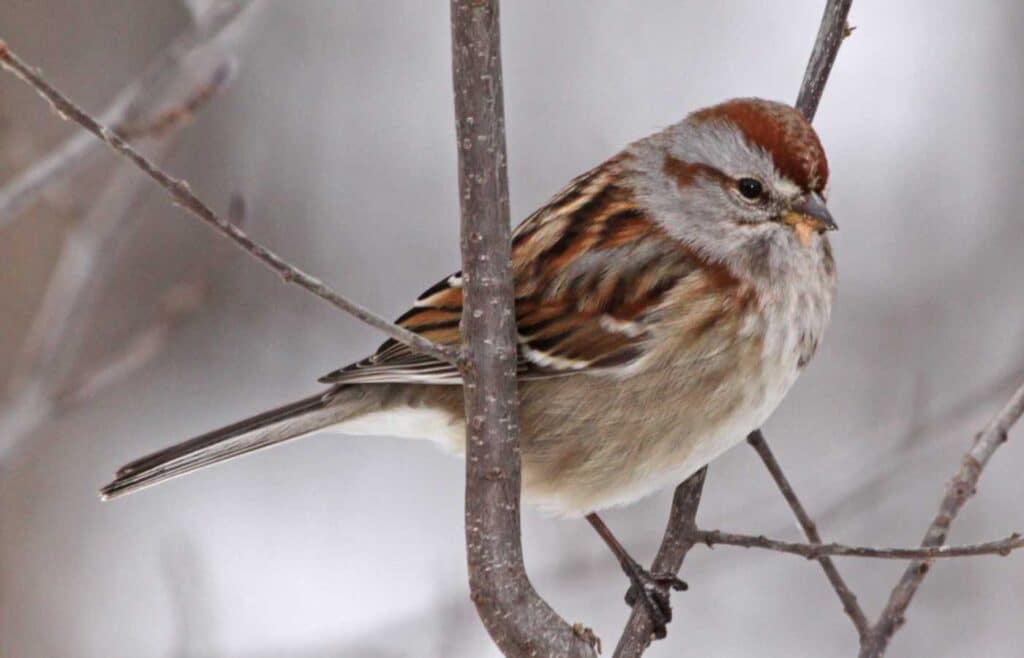
Who’s That Bird?
The American Tree Sparrow, with its distinctive rusty cap and eye-line, gray breast with a charming central spot, and a unique bi-colored beak, is a delightful winter visitor that adds a touch of warmth to the cold Wisconsin landscape. This small songbird migrates from its breeding grounds in the Arctic tundra to grace our fields and feeders, often mingling with flocks of dark-eyed juncos, creating a bustling community of winter birds right in our backyards.
Where & When to Spot Them
As the cold weather sweeps across the Great Lakes region, American Tree Sparrows make their way south to spend the winter months in Wisconsin. Their arrival is eagerly anticipated by birdwatchers, as these sparrows adapt to the chilly climate, seeking refuge in open areas, city parks, and backyards, wherever they can find food and shelter.
Feeding the Sparrows
Attracting American Tree Sparrows to your garden is simple and helps support them during their winter stay. These birds are not picky eaters but have a particular fondness for mixed seeds and millet. Spreading these on the ground or using low feeders mimics their natural feeding habits and encourages them to visit.
9. The Hairy Woodpecker

Who’s That Bird?
The Hairy Woodpecker, with its larger stature and noticeably longer bill compared to its cousin, the Downy Woodpecker, is a striking figure in the forests and wooded areas of Wisconsin. Its black and white plumage stands out against the bark of trees, making it a fascinating subject for bird watchers and nature enthusiasts alike. The Hairy Woodpecker’s bold appearance, including the flash of white down its back and its commanding presence, adds to the allure of Wisconsin’s natural landscapes.
Where & When to Spot Them
This bird is a year-round resident across Wisconsin, thriving in large trees of deciduous and coniferous forests alike. From the northern half of the state to the bustling environments of Door County and city parks, the Hairy Woodpecker has adapted to a variety of habitats. Its ability to find food in tree bark, ranging from small insects to larvae, makes it a vital part of the ecosystem, controlling pest populations and contributing to forest health.
Feeding Habits and Attraction Tips
While the Hairy Woodpecker naturally prefers foraging on tree trunks for insects, it readily visits bird feeders offering suet, sunflower seeds, and nuts. Attracting this woodpecker to your backyard is not only a great way to observe its behaviors up close but also supports its dietary needs, especially during cold weather when insects are less accessible. Suet feeders, in particular, mimic the bird’s natural feeding habits and can draw them into open areas for observation.
10. Mourning Doves

Who’s That Bird? Plump, gray birds with distinctive cooing sounds.
Where to Find: Throughout Wisconsin, mourning doves can be found in open areas with scattered trees, such as farmlands, edges of woods, and residential areas, where they come to feeders for seeds. These birds are year-round residents in Wisconsin, but their numbers may decrease in winter as some migrate south.
Attraction Tips: They prefer seeds scattered on the ground or on platform feeders.
11. Red-bellied Woodpeckers

Who’s That Bird?
The Red-bellied Woodpecker, with its striking red cap and nape (in males), and its zebra-striped back, is a lively presence in Wisconsin’s forests and backyards. Despite its name, its belly’s red hue is often subtle and hard to see.
Where and When to Spot Them
A year-round resident of Wisconsin, the Red-bellied Woodpecker frequents deciduous forests, woodlots, and suburban areas with large trees. They’re more noticeable in winter when leaves don’t obscure the view.
How to Attract
Offering suet in feeders is an excellent way to attract Red-bellied Woodpeckers to your yard. They also enjoy sunflower seeds and nuts, which can be provided in platform feeders or specialized woodpecker feeders designed to accommodate their feeding style.
12. Common Redpolls

Description: Small finches with a rosy red forehead, a black chin, and a heavily streaked body.
Where and When: Look for them in Wisconsin during the colder months, especially in flocks at bird feeders or birch trees.
Attracting Tips: They love nyjer (thistle) seeds and small black oil sunflower seeds. Providing these in finch feeders can attract them to your yard.
13. Pine Grosbeaks

Description: Large, plump finches with a pinkish-red (males) or grayish (females) coloration and a thick bill.
Where and When: Occasionally seen in northern Wisconsin during winter, often in areas with abundant fruit-bearing trees. These species are more commonly found in northern Wisconsin during winter, and their presence can vary yearly.
Attracting Tips: Plant fruit trees or provide fruit in feeders to attract these grosbeaks to your garden. They are attracted to feeders offering sunflower seeds.
14. Bohemian Waxwings
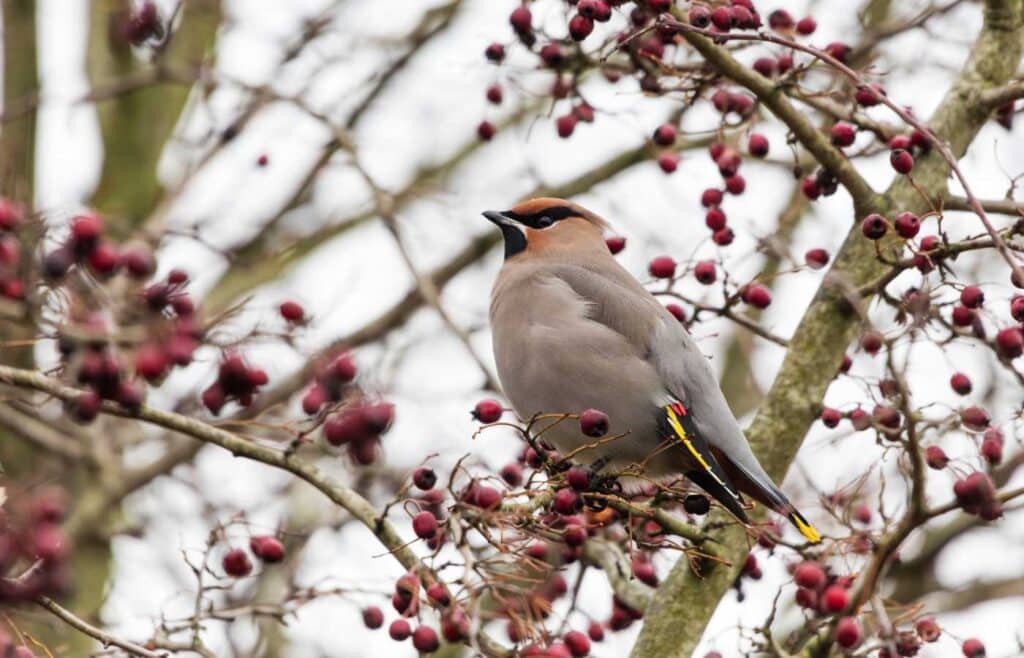
Description: Sleek, gray birds with distinctive red wing tips and a yellow tail tip, known for their sociable flocks.
Where and When: Irregular winter visitors, they can be found in fruiting trees or shrubs, often in large, noisy flocks. Their winter appearances in Wisconsin are irregular and depend on food availability. They may be seen in large flocks when fruit sources are abundant.
Attracting Tips: Plant berry-producing trees and shrubs like juniper, cedar, and hawthorn to attract them.
15. Purple Finches

Description: Chunky birds with a raspberry red (males) or heavily streaked (females) appearance and a short, conical bill.
Where and When: Can be seen in Wisconsin during the winter, often at feeders or in coniferous forests.
Attracting Tips: They are attracted to black oil sunflower seeds, millet, and safflower seeds in tube or platform feeders.
16. Red Crossbills
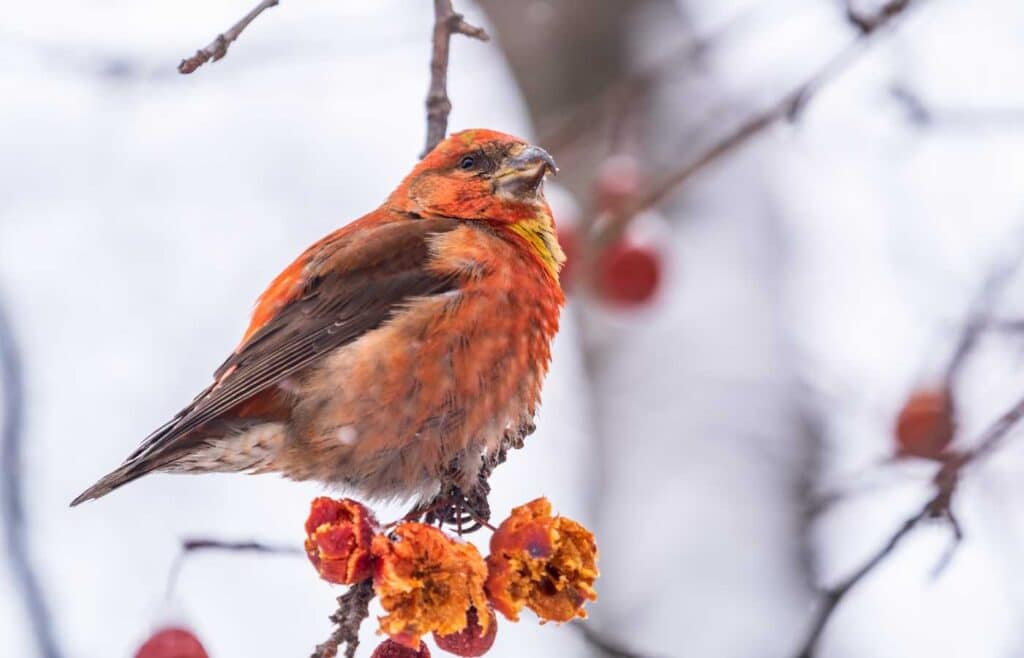
Description: Medium-sized finches with distinctive crossed bills, males are red and females are greenish-yellow.
Where and When: Look for them in coniferous forests across Wisconsin, especially during irruptive winter movements. Their unique crossed bills are adapted for extracting seeds from conifer cones. They are more likely to be found in areas with abundant coniferous trees.
Attracting Tips: Providing conifer seeds or large seed mixes in sturdy feeders can attract these unique birds.
17. Evening Grosbeaks
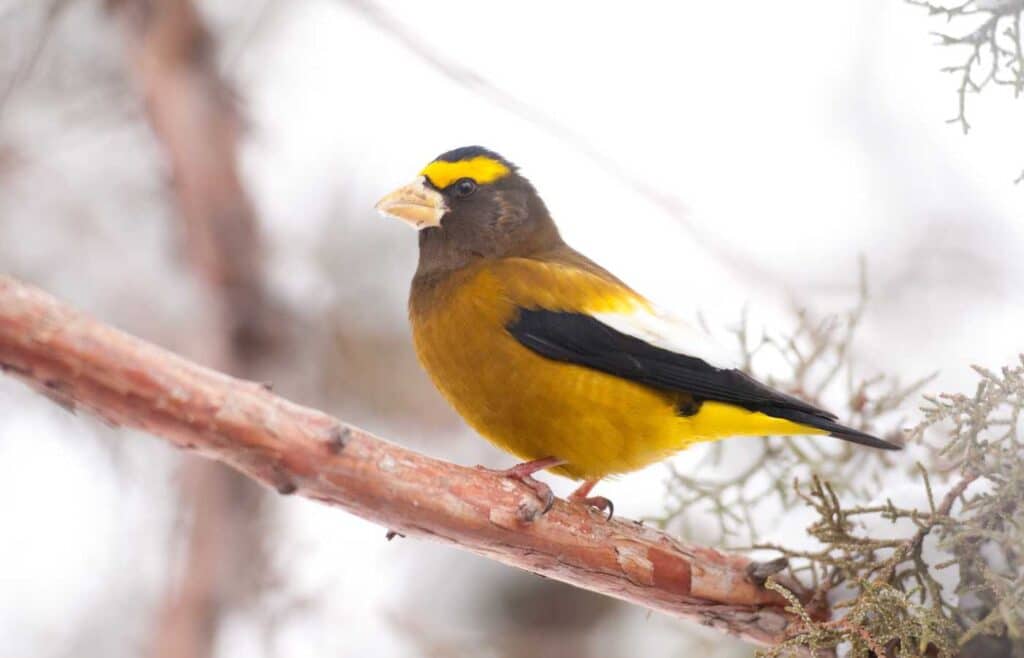
Description: Large, striking birds with a yellow body, black wings, and a large bill.
Where and When: Winter visitors to Wisconsin, they are often seen at feeders in areas with large trees. They are more commonly found in Northern Wisconsin.
Attracting Tips: Offer sunflower seeds in platform feeders to attract these grosbeaks. They are attracted to feeders offering sunflower seeds.
18. Cedar Waxwings
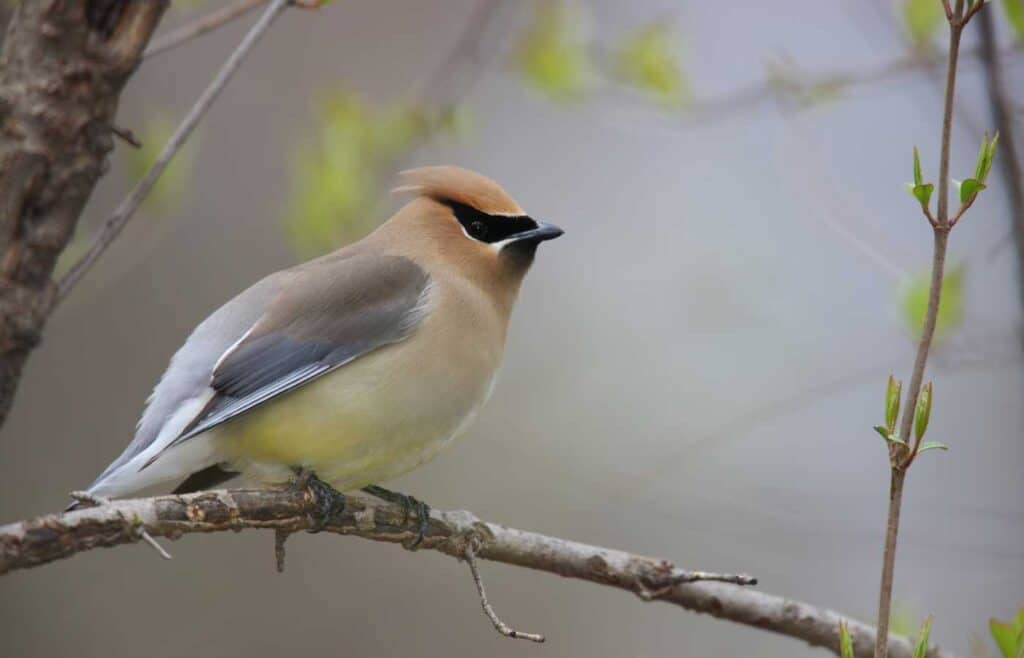
Description: Sleek, brown birds with a yellow belly and distinctive red wax-like wing tips.
Where and When: Can be seen year-round, but more commonly in winter, in areas with abundant berries.
Attracting Tips: Plant berry-producing trees and shrubs to attract Cedar Waxwings.
19. American Goldfinches
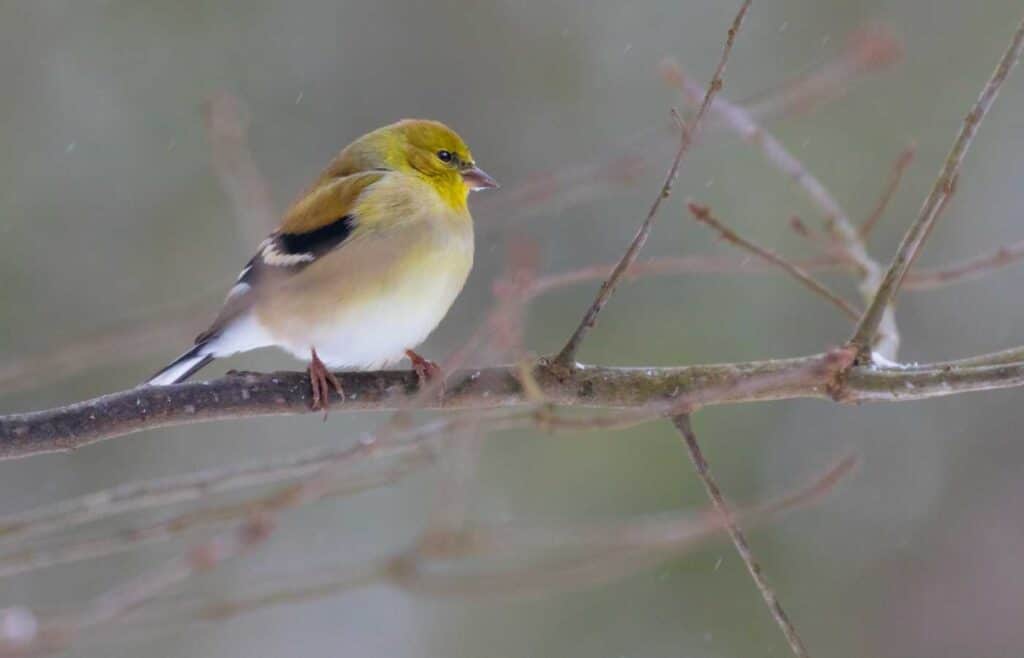
Description: Small, vibrant yellow birds in summer, they turn olive in winter. They have a distinctive flight with a “po-ta-to-chip” call.
Where and When: Present year-round in Wisconsin, more noticeable at feeders during winter.
Attracting Tips: Provide nyjer (thistle) seeds and sunflower seeds in tube feeders.
20. White-breasted Nuthatches
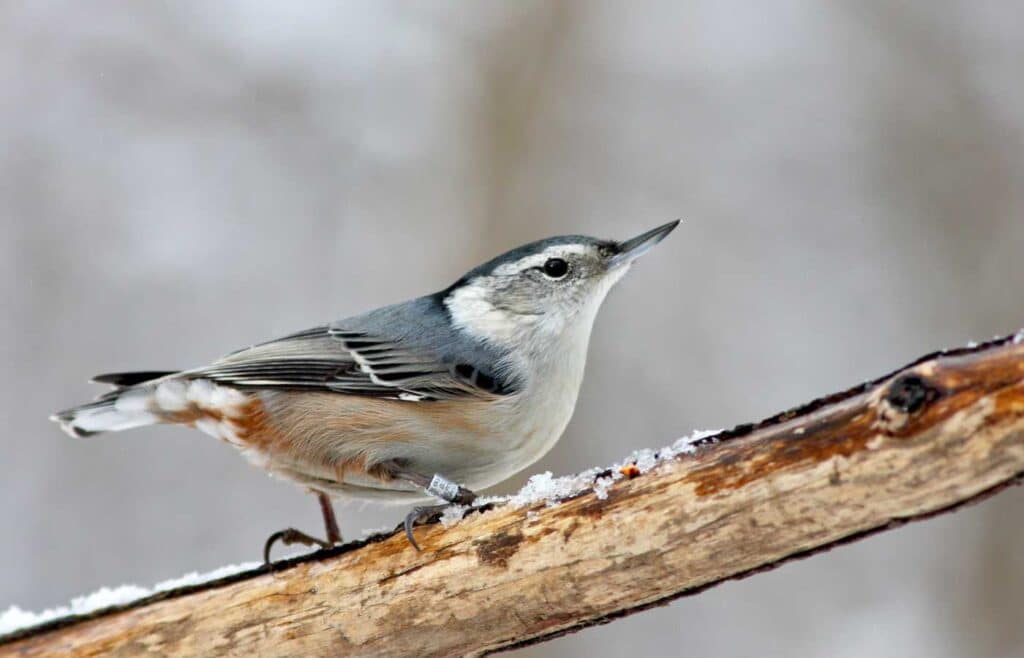
Description: Small, agile birds with a white breast, blue-gray back, and a black cap.
Where and When: Year-round residents of Wisconsin, they are often seen on tree trunks and branches.
Attracting Tips: Suet, sunflower seeds, and peanuts are great for attracting them to feeders.
21. House Sparrows

Description: Starlings are iridescent black with a short tail; House Sparrows are brown and gray with a shorter, chunkier appearance.
Where and When: cCommon in urban and suburban areas throughout Wisconsin year-round.
Attracting Tips: These birds aren’t picky and will visit feeders for various seeds, but to specifically cater to other species, focus on providing the preferred foods of those birds instead. They can be aggressive at feeders, often outcompeting native birds. While they are common, some birdwatchers choose to manage feeder setups to discourage their dominance.
22. Bald Eagles
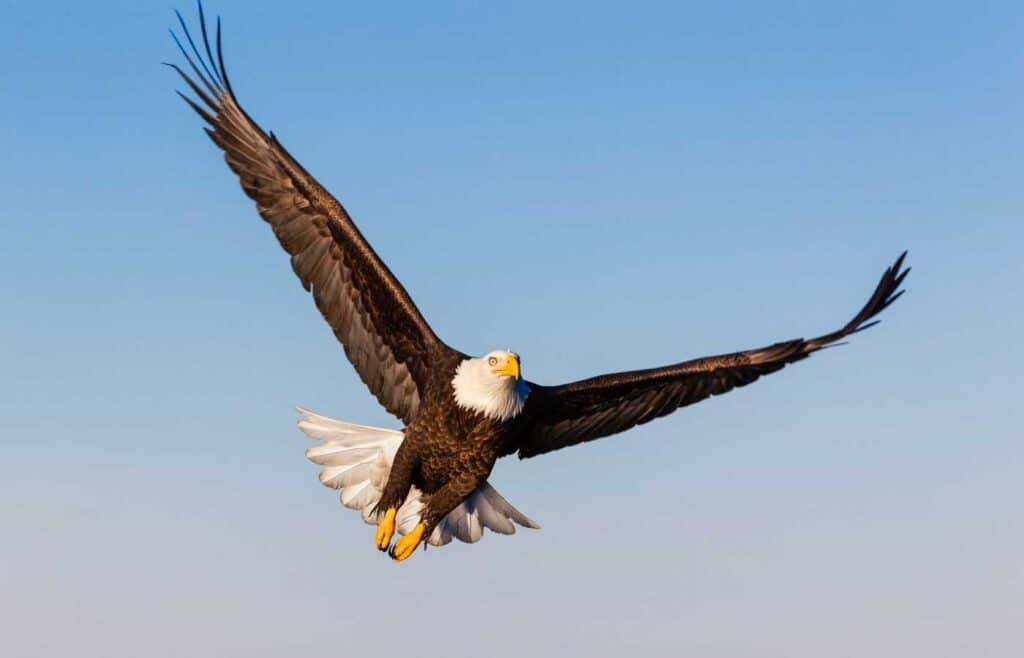
Description: Majestic birds with white heads and tails, and dark brown bodies and wings.
Where to Find: Along major rivers, lakes, and reservoirs where open water allows for fishing. The Mississippi River along the Great River Road, the Wisconsin River, and areas around the Chippewa River are prime viewing spots. Eagles tend to congregate near dams or in areas where water remains unfrozen. For more tips on where to spot them, check out our Bald Eagle Watching Season in Wisconsin guide.
Attraction Tips: Preserving their natural habitat is key; they are drawn to areas with plentiful fish.
Fun Fact: At the Kennedy Space Center in Florida, there’s an eagle’s nest that’s roughly the size of a king-sized mattress—proof that these birds know how to build big!
23. Cooper’s Hawk
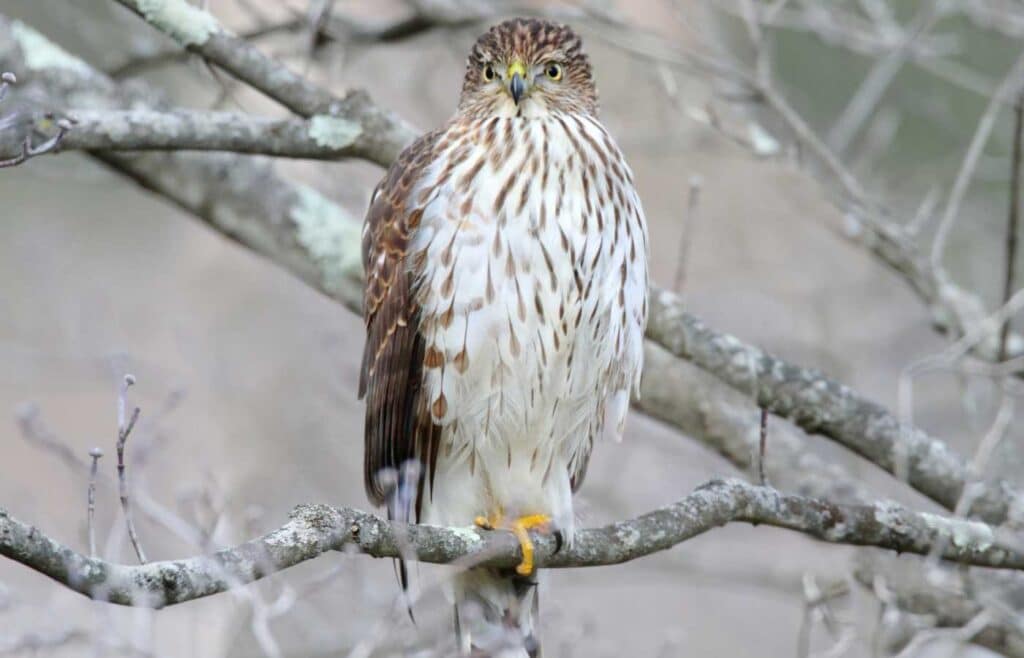
Description: Medium-sized hawks with blue-gray backs and barred red chests.
Where to Find: Throughout Wisconsin in wooded areas, including suburban and urban parks and backyards. They adapt well to various habitats but are often seen in places with ample tree cover and available prey. You can also see hawks and other birds of prey up close at the Schlitz Audubon Nature Center.
Attraction Tips: These birds are attracted to smaller birds at feeders, though attracting them specifically is not usually recommended for the safety of other birds.
24. Red-breasted Nuthatches

Description: Small birds with blue-gray upperparts, a black cap, and a red-breasted underside.
Where to Find: Coniferous forests or mixed woodlands across Wisconsin, especially in the northern part of the state. They are also attracted to backyard feeders in residential areas.
Attraction Tips: Suet feeders, sunflower seeds, and peanut feeders can attract them.
25. American Crows

Description: Large, all-black birds with a distinctive cawing sound.
Where to Find: Highly adaptable, American crows can be found statewide in both rural and urban areas. Look for them in open fields, farmlands, and city parks, often in large flocks.
Attraction Tips: They are omnivores, so a variety of foods can attract them, but be mindful as they can overwhelm smaller birds.
26. House Finches
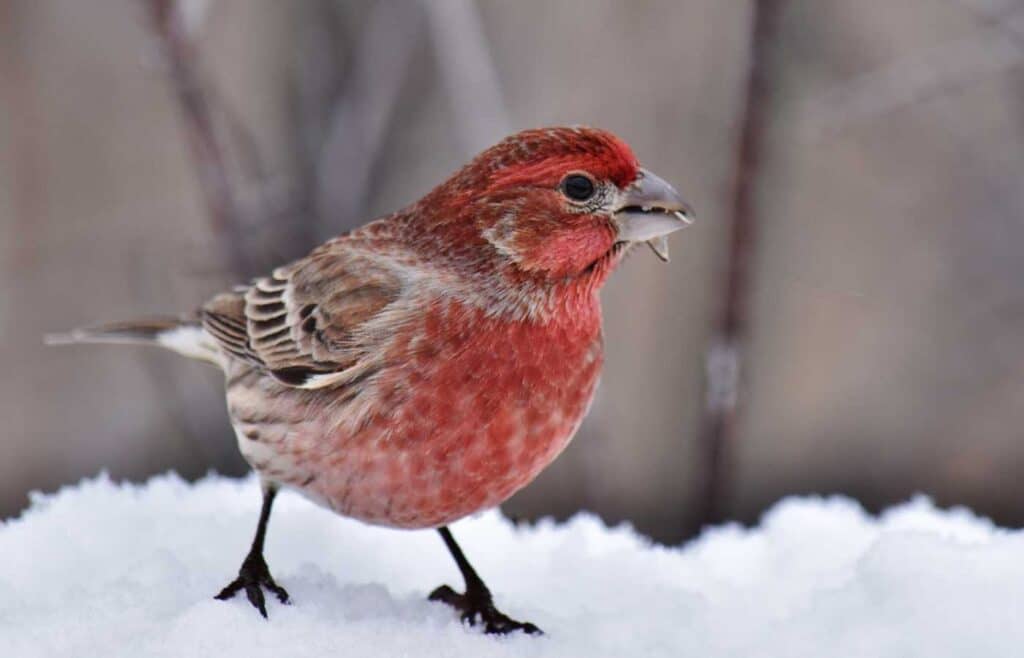
Description: Small, colorful birds with red, brown, or yellow plumage.
Where to Find: Common across Wisconsin, especially in urban and suburban areas where food sources from bird feeders are abundant. They prefer environments with a mix of open ground and scattered trees or shrubs.
Attraction Tips: Thistle and sunflower seeds are preferred.
27. Rough-legged Hawk
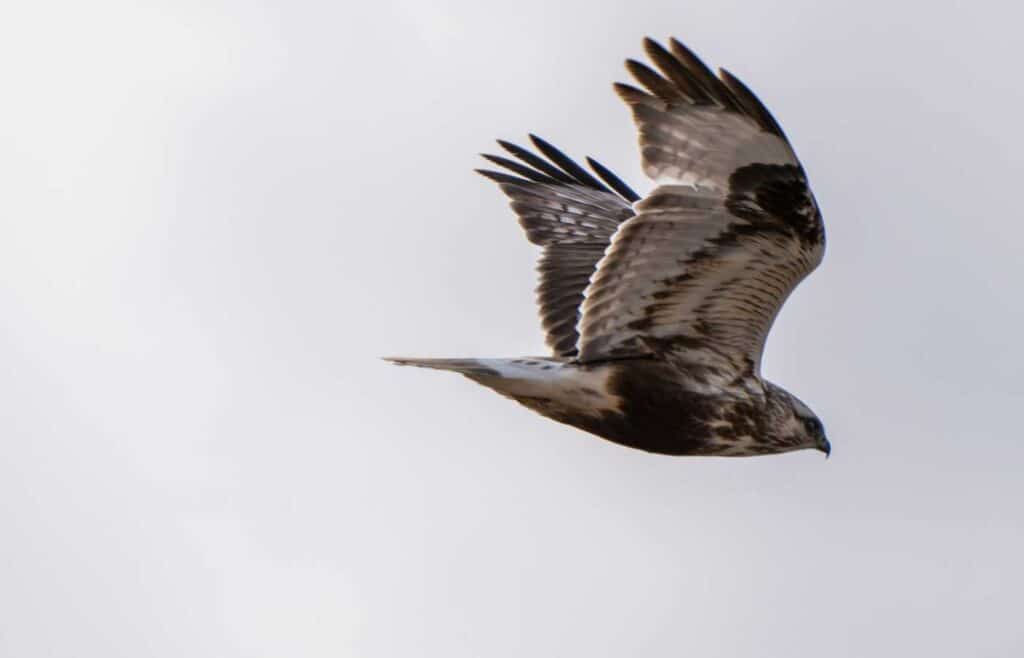
Description:Large hawks with feathered legs, known for hovering while hunting.
Where to Find: Open country is their preferred habitat, including fields, marshes, and prairies in rural parts of Wisconsin. Look for them perched on fence posts or soaring over open fields in search of prey.
Attraction Tips: Protecting open lands and rodent populations can indirectly attract them.
28. European Starling
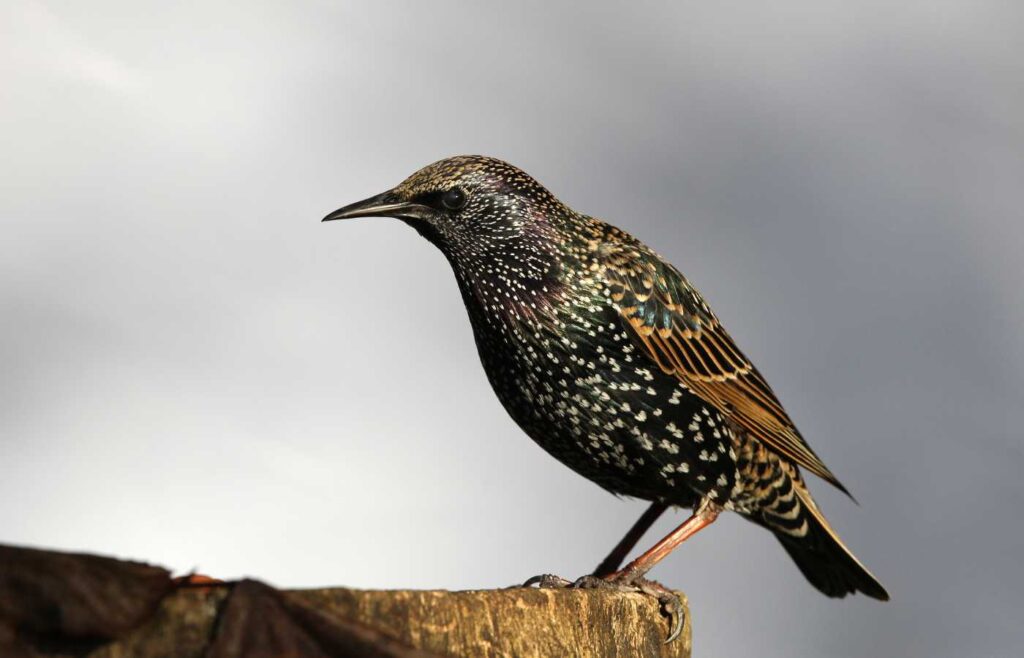
Description:Small, iridescent black birds with a yellow beak in the summer that turns dark in the winter.
Where to Find: Everywhere in Wisconsin, from rural farmlands to urban centers. They are often seen in large flocks in open areas or perched on buildings and trees.
Attraction Tips: They are not picky eaters but are considered invasive, so attracting them is not usually encouraged. They can be aggressive at feeders, often outcompeting native birds. While they are common, some birdwatchers choose to manage feeder setups to discourage their dominance.
29. American Robins
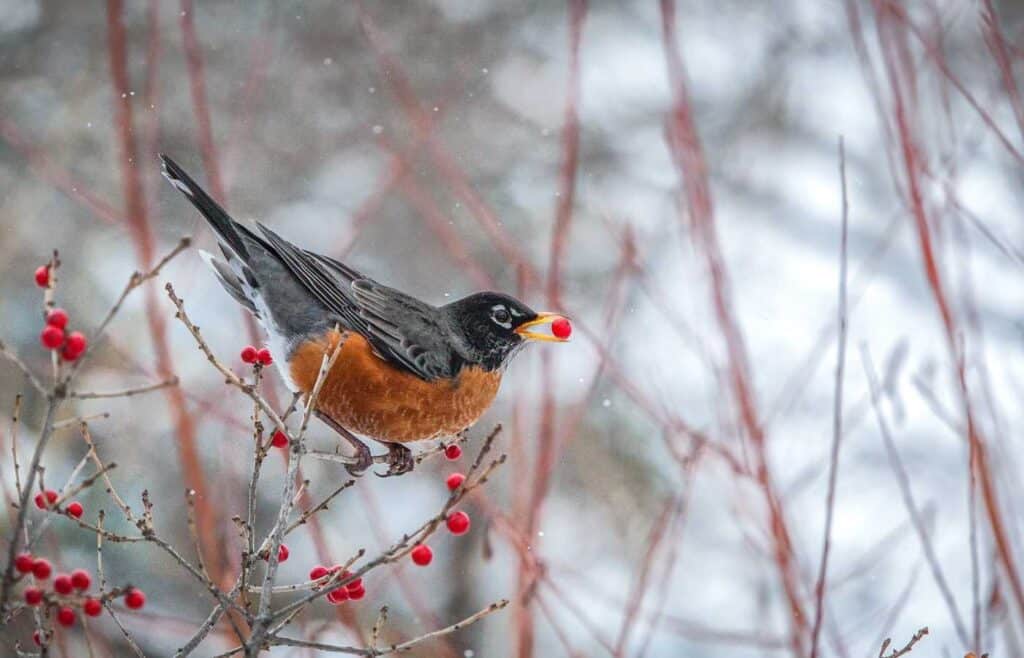
Description:Familiar birds with orange bellies and dark backs, though they might not always be seen on the ground in winter.
Where to Find: While many migrate, some robins remain in Wisconsin during winter, especially in areas offering fruit-bearing trees and shrubs. Look for them in wooded areas, parks, and yards. However, their visibility decreases as they form flocks and roost in wooded areas.
Attraction Tips: Fruit-bearing trees and shrubs can attract them during the winter months.
30. Sharp-shinned Hawk

Who’s That Bird? Small hawks with sharp talons, known for preying on birds at feeders.
Where and When: Forested areas and backyards, more common during migration but some remain in winter.
Attraction Tips: Attracting them specifically is not usually recommended due to their predatory nature.
31. Great Horned Owls and Eastern Screech Owl

Who’s That Bird? (Great Horned): Large, ear-tufted owls known for their deep hooting.
Who’s That Bird? (Eastern Screech): Small owls with ear tufts, camouflaged plumage.
Where and When: Woodlands and urban parks, year-round residents. Great Horned Owls are common in winter woods, while Eastern Screech Owls may be found in tree cavities.
Attraction Tips: Nesting boxes for screech owls and preserving large trees for great horned owls can encourage them to visit.
Exploring the world of winter birds in Wisconsin is a rewarding activity that brings joy and color to the coldest days.
By setting up the right feeders and offering their favorite foods, you can enjoy the company of these beautiful birds all season long.
Happy, bird-watching!
Related Posts:
- 10 Gorgeous Winter Hikes Around Milwaukee
- 50 Mind-Blowing Facts About Snow For Kids
- 10 Best Cold Weather Science Experiments For Kids
- 25 Gorgeous Hikes Around Milwaukee
- 25 Simple Spring Activities Your Kids Will Love
Calie Herbst, Editor-in-Chief of Milwaukee With Kids, has spent over a decade combining her experiences as a parent of three to create a hub for Milwaukee’s family adventures.
Her decade-long teaching career in Milwaukee Public Schools and academic background, including a Master’s in Teaching from Marquette University and dual B.A.s in Sociology and Spanish from the University of Wisconsin – Madison, fuel her passion for inclusive and engaging family content.
Calie is also a recognized voice in local media, contributing to WISN Channel 12 News, WTMJ Wisconsin Morning News, Fox 6’s Real Milwaukee, and B93.3.
Discover more about Calie’s journey and editorial approach on her About Page and Editorial Policy Page.


